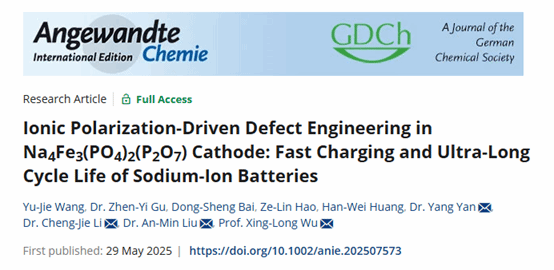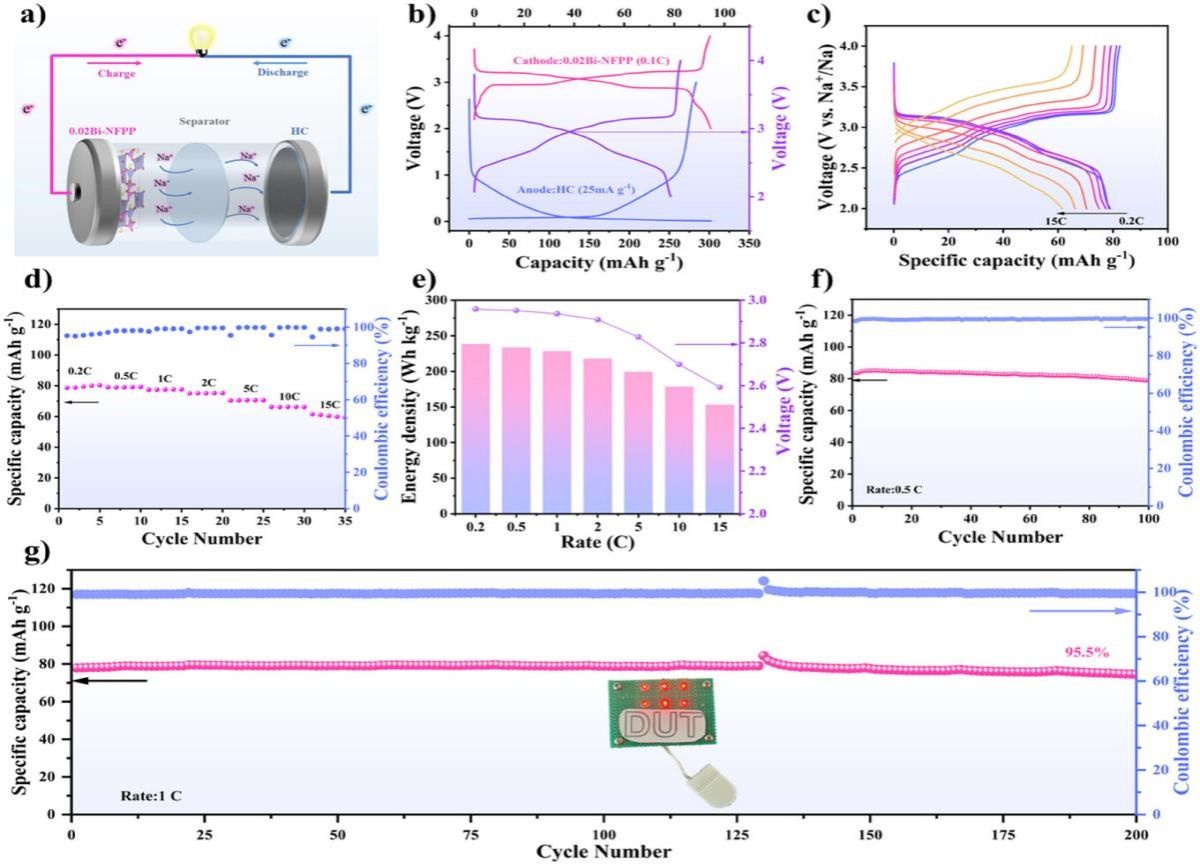
Associate Professor Yan Yang , Liu Anmin and their colleagues at DUTPJ recently reported an ion polarization-driven defect engineering strategy to regulates the electronic structure and Na+ transmission dynamics of Na4Fe3(PO4)2(P2O7) (NFPP) cathode material through Bi3+ doping. Experimental results and theoretical calculations show that Bi3+ with (18+2) electron configuration significantly enhances the crystal structure stability of NFPP by strengthening the covalency of Bi-O bonds. Meanwhile, the heterovalent Bi3+ doping optimizes the bandgap of the material (from 3.29 eV to 0.16 eV) and promotes Na+ diffusion, while introducing lattice defects to provide additional sodium storage sites. The optimized 0.02Bi-NFPP cathode exhibits excellent electrochemical performance as the half-cell only takes 31.6 minutes to charge to 80% at a rate of 1 C, and the capacity decay is only 0.000495 mA h g-1 per cycle (86.9% capacity retention) over 20,000 cycles at 20 C. The full battery based on hard carbon anode maintains 95.5% capacity retention after 200 cycles at 1 C. This study reveals the synergistic mechanism between ion polarization effect and lattice defects, and provides a new strategy for designing SIBs cathode materials with both fast charging/discharging capabilities and ultra-long life.
The above research has been published with the title of “Ionic Polarization-Driven Defect Engineering in Na4Fe3(PO4)2(P2O7) Cathode: Fast Charging and Ultra-Long Cycle Life of Sodium-Ion Batteries” in Angewandte Chemie International Edition.


Published on 1 July 2025